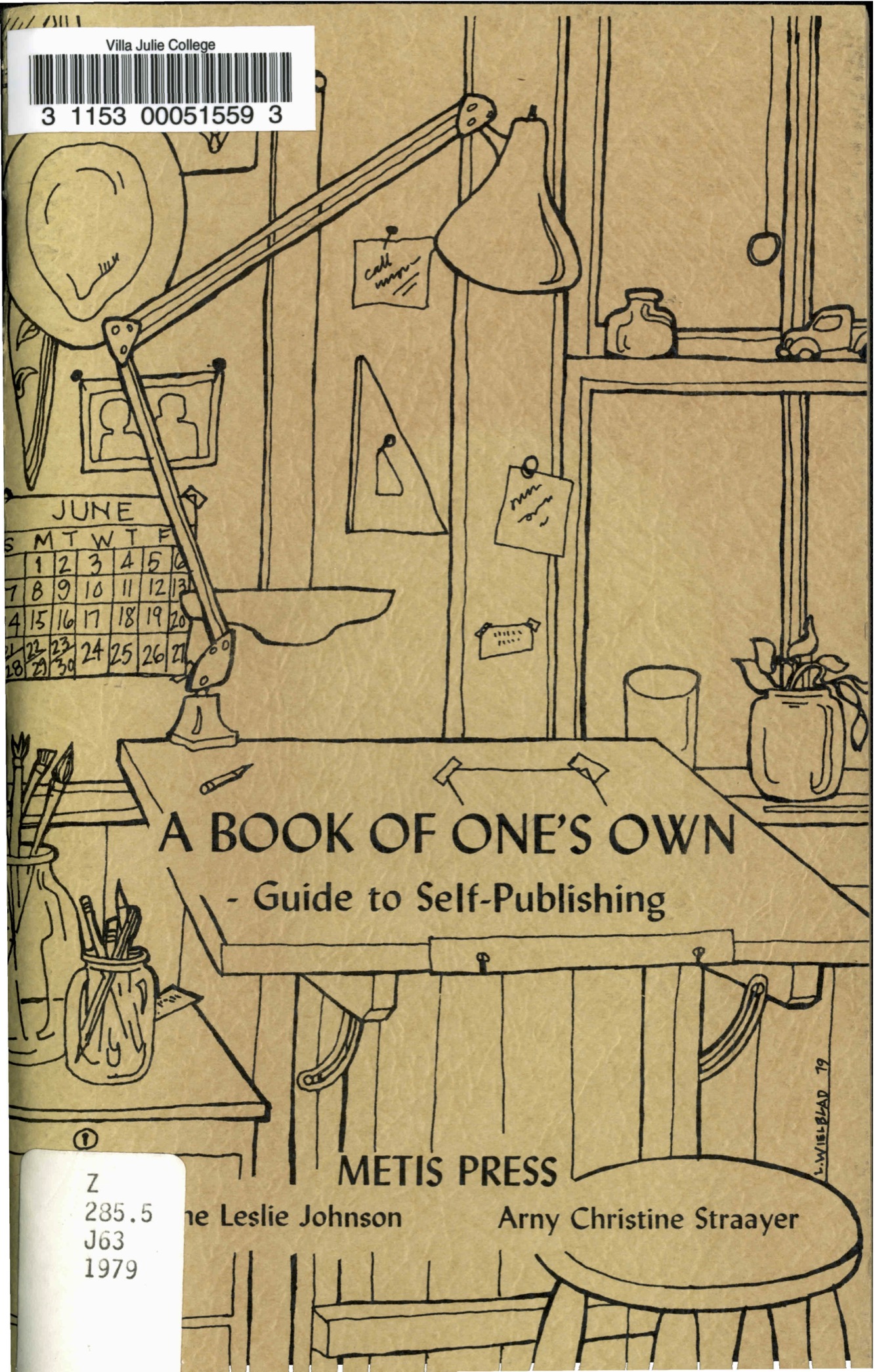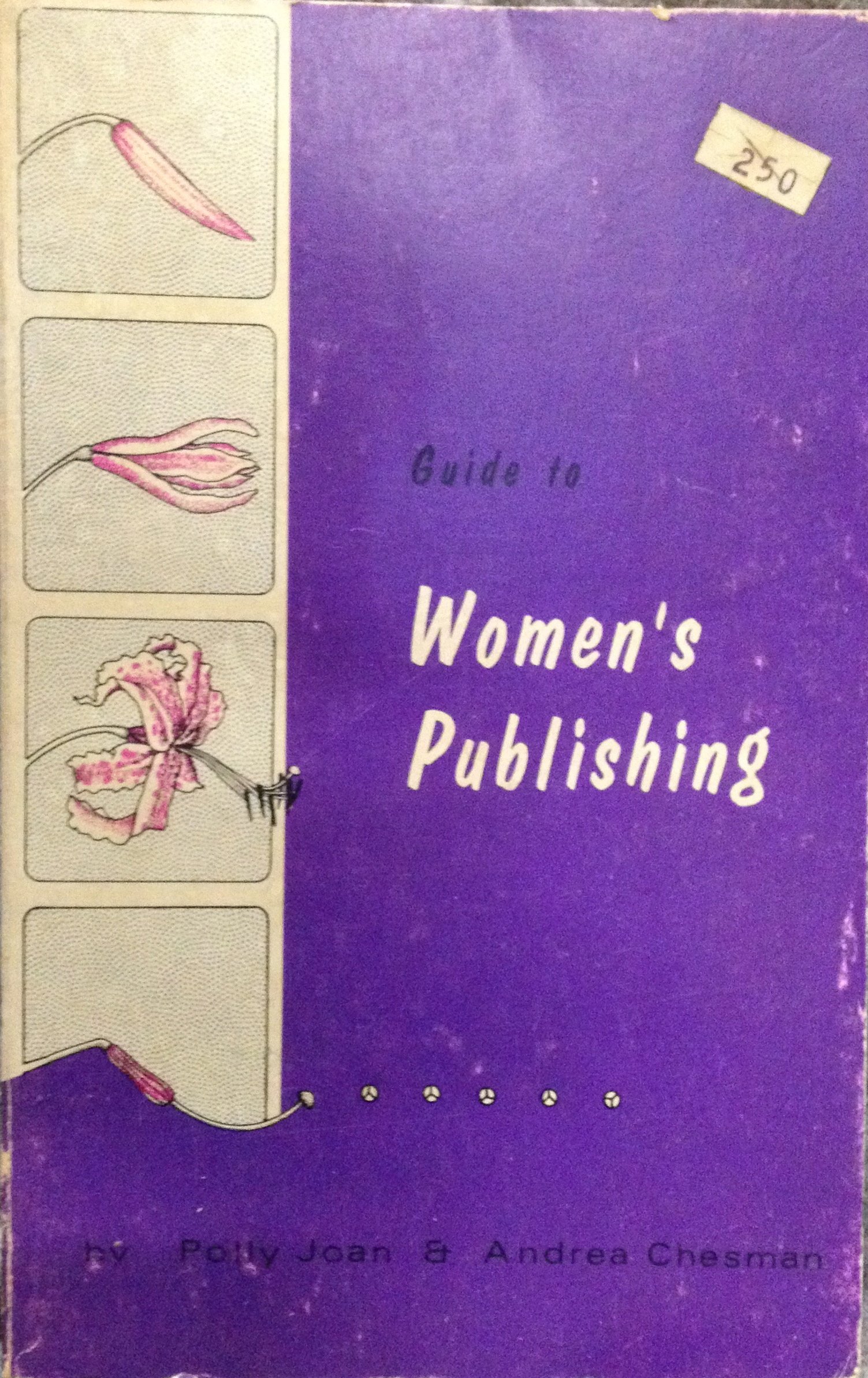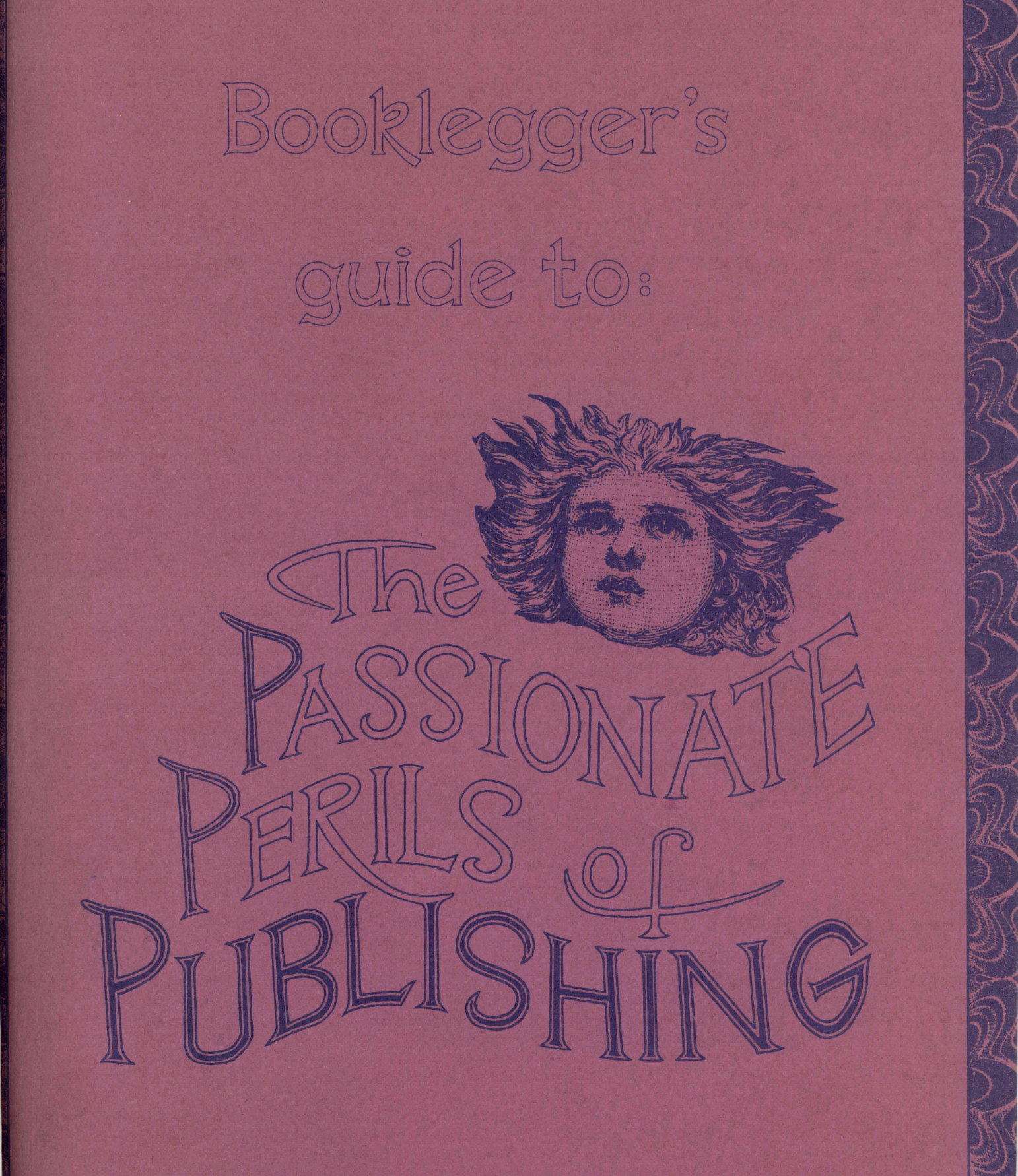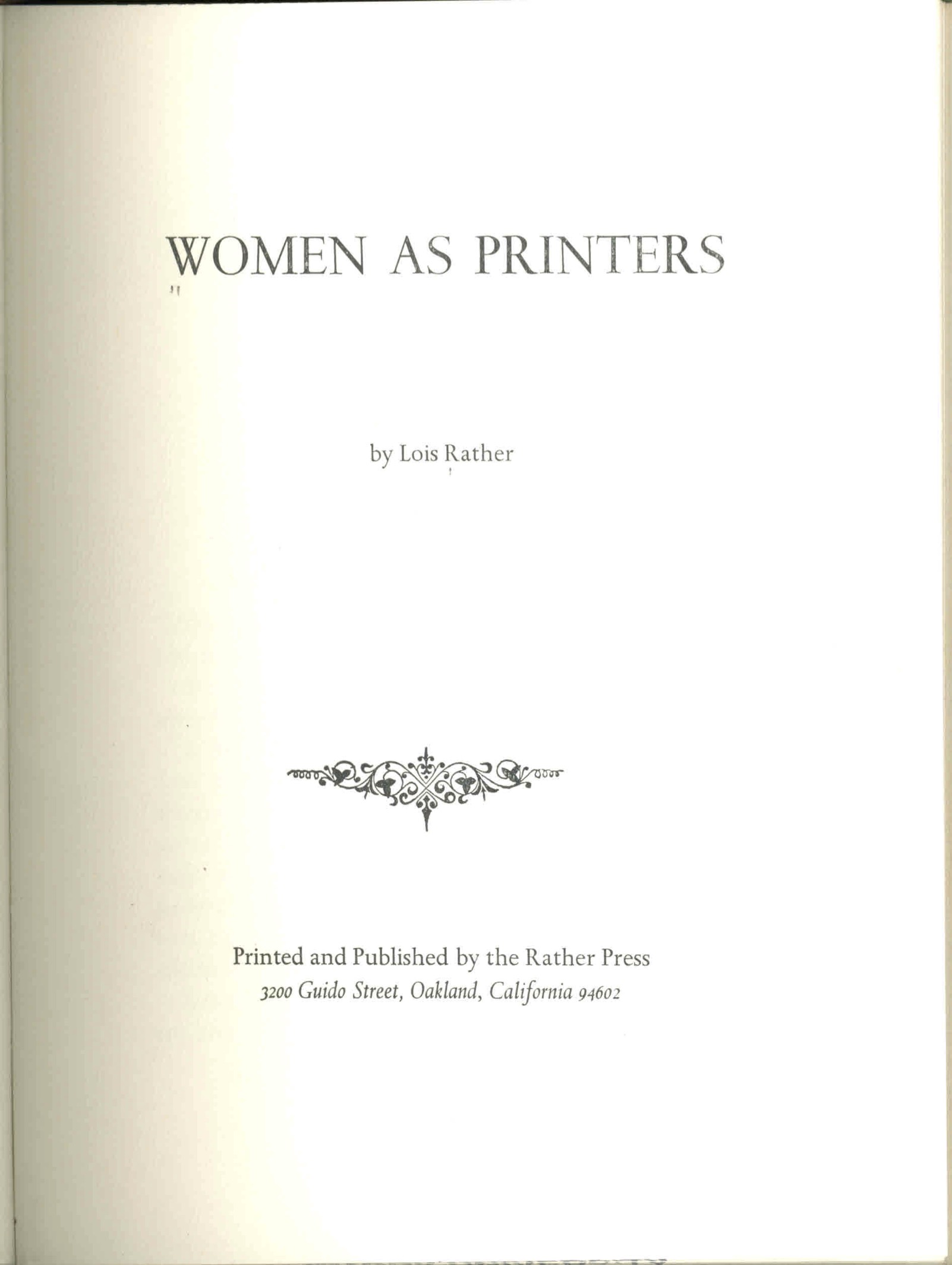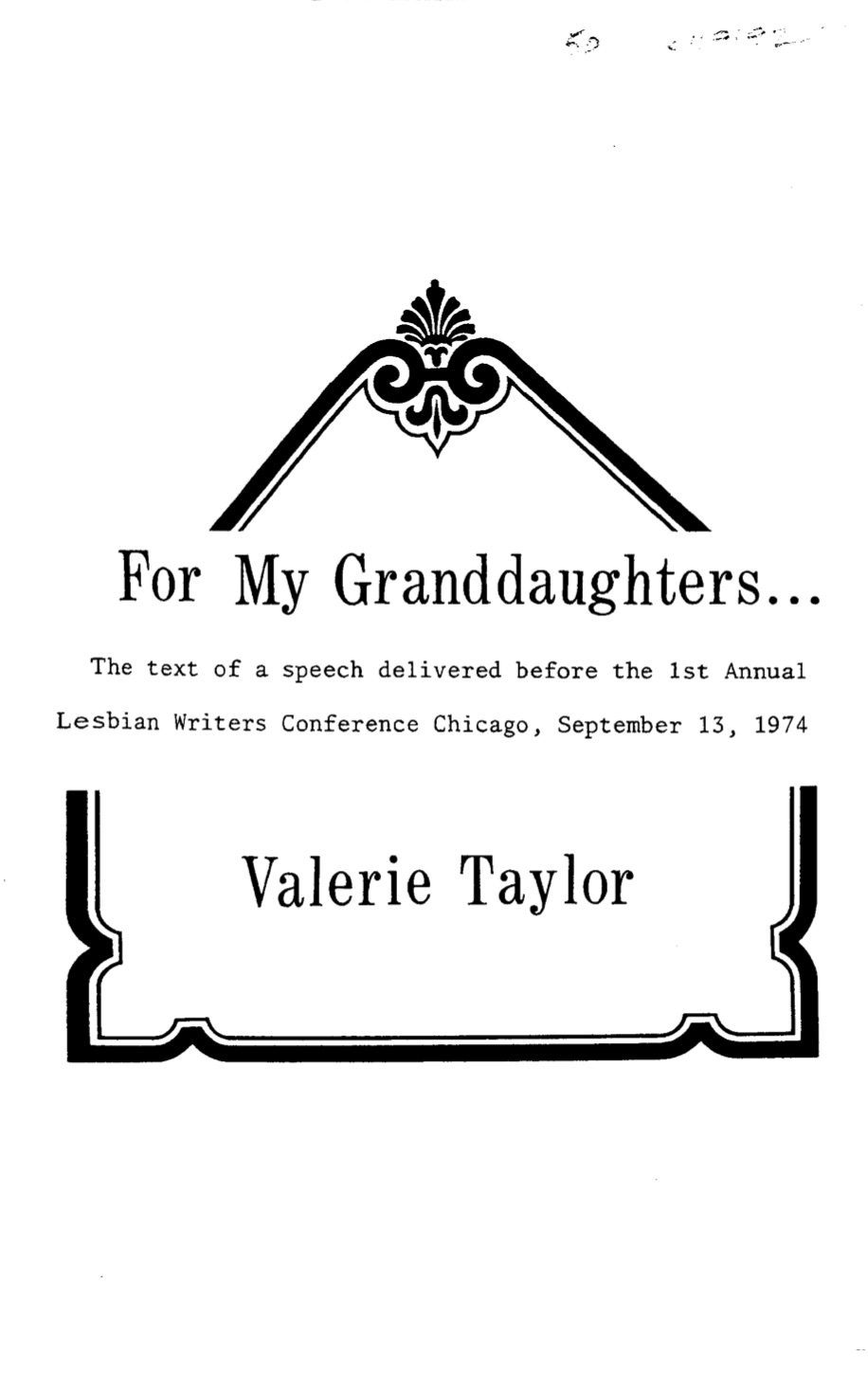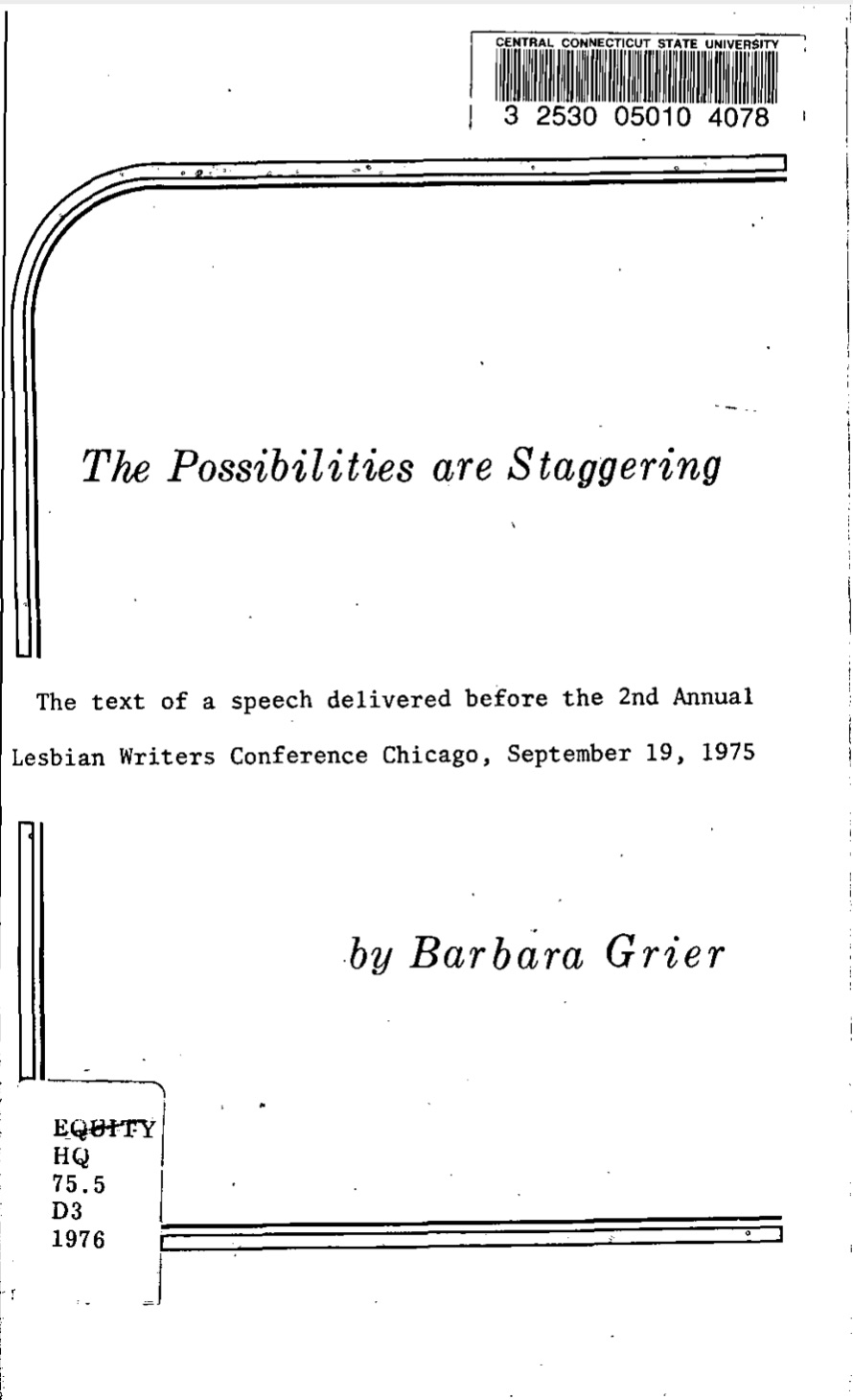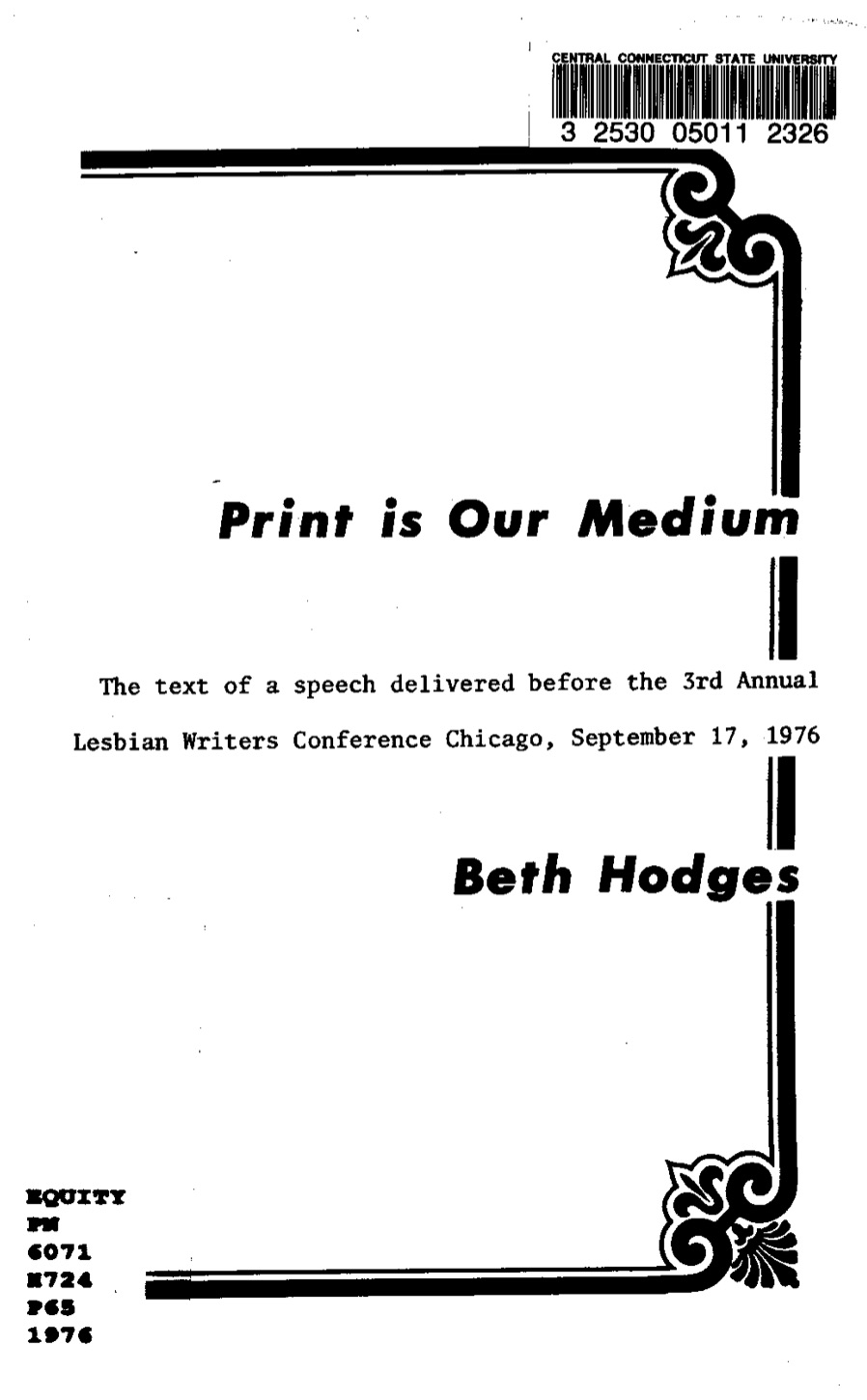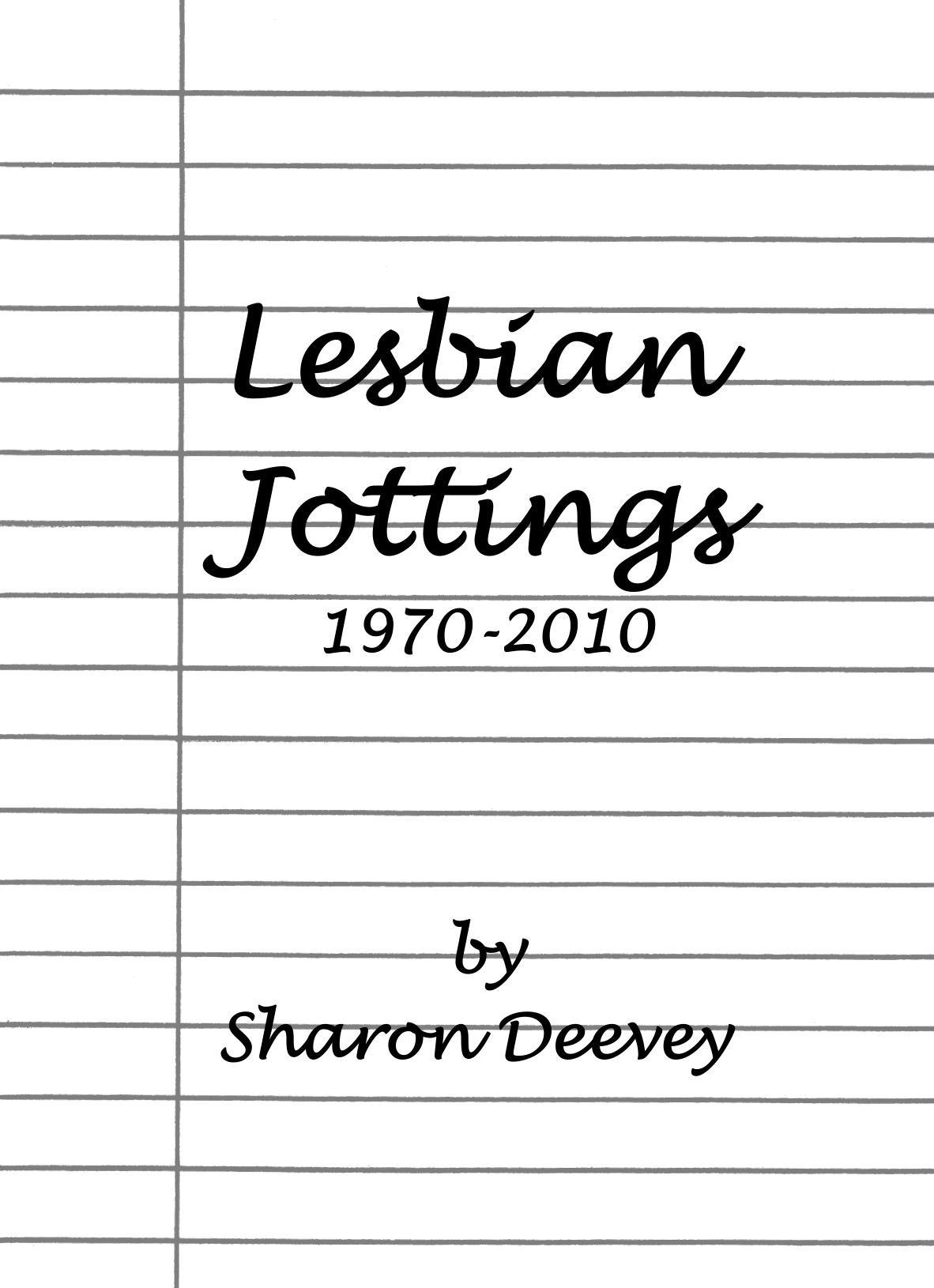Publishing & Printing
A Book of One's Own
Metis Press published A Book of One's Own, a guide to producing and publishing books.
All-Women's Print Shops - 1978
View All-Women's Print Shops 1978 in a larger map
Data compiled from Guide to Women's Publishing by Polly Joan and Andrea Chesman (Paradise, CA: Dustbooks, 1978).
Big Mama Rag Retrospective
Big Mama Rag was a feminist newspaper published in Boulder, Co. Chocolate Waters put together this presentation to evoke the work of the newspaper. It is rendered below in two parts.
Lesbian Writers Conference - 1974-1976
For five years from 1974 until 1978, lesbian writers from all over the United States and Canada gathered in Chicago, IL during a September weekend for the Lesbian Writers Conference. Womanpress published pamphlets with the keynote addresses from 1974, 1975, and 1976. The pamphlets are presented below.
| Attachment | Size |
|---|---|
| 231.39 KB | |
| 399.71 KB | |
| 1.26 MB |
Map of Shewolf Directory
From Rachel Corbman:
Rachel Corbman website: https://sites.google.com/prod/wfu.edu/rachelcorbman/about/public-history...
Margins 23 (August 1975) Special Issue on Lesbian-Feminist Publishing
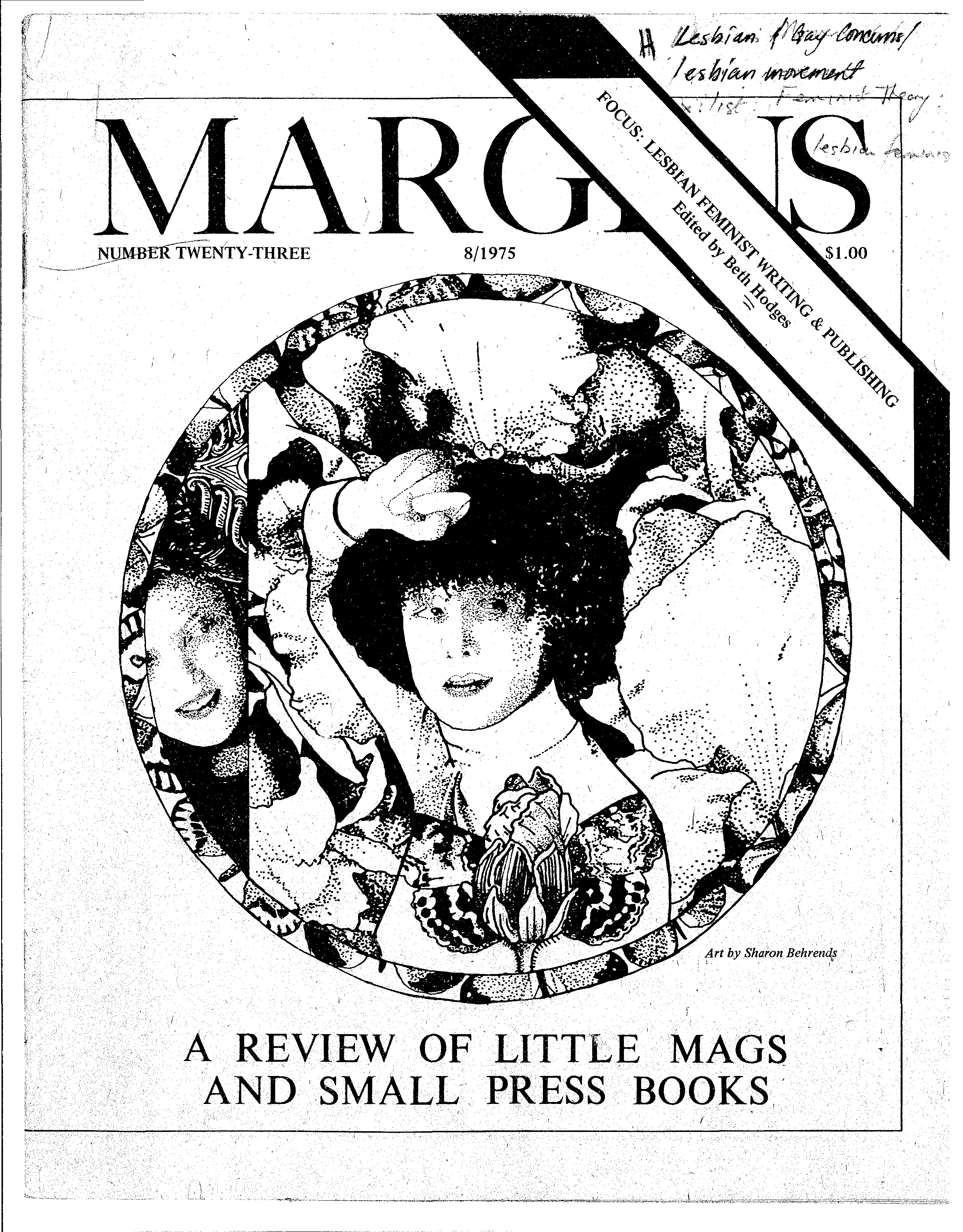
| Attachment | Size |
|---|---|
| 22.27 MB | |
| 317.44 KB | |
| 2.8 MB |
New Women's Survival Guide - Publisher's information Pages
Sharon Deevey's Lesbian Jottings 1970-2010
Sharon Deevey from Westerville, Ohio, has been a lesbian activist since coming out in 1970. She retired from her varied careers in elementary school teaching, nursing, and librarianship in 2006. She currently writes and dances at a local senior center, and keeps in close touch with a lifetime of lovers and friends.
Two of her poems appeared in Dykes for an Amerikan Revolution, "for Joan" and "before Chincoteague." Dykes for an Amerikan Revoution is available on the Lesbian Poetry Archive here.
Deevey recently published a book, Lesbian Jottings 1970-2010. Copies of the book are available by emailing her at sdeevey@columbus.rr.com. A link to the PDF of the book is available at the end of this exhibit.
The complete introduction to Deevey's Lesbian Jottings 1970-2010 is below. Deevey's papers are in two places. Her multidisciplinary lesbian health library (including 200 monographs and 600 articles) is at the Lesbian Health Research Center at UCSF, Laurel Heights Campus, Institute for Health & Aging, Suite 340, Box 0646, San Francisco, CA 94143. Documents from the Cleveland and Columbus, OH chapters of Cassandra: Radical Feminist Nurses Network, with which Deevey was active, are at the Medical History Library at Pryor Health Sciences Library at The Ohio State University. Deevey's journals and photograph albums will come to rest at the Lesbian Herstory Archives in New York, NY.
Introduction
When I felt overwhelmed, I wrote. When I felt thrilled, I wrote. At first I wrote in the laundromat, on scraps of paper bags, or on semi-blank pages from a magazine left lying by the dryers. I started to write in 1970, the year I came out as a lesbian. My life was full of shock, and at first, of secrets.
Until then I had been the most ordinary of girls, the oldest child in a middle class, Republican, New England family. Except for the frequent moves for my father’s work-- and being the last in town to get television -- we were the most mainstream family imaginable. Mom was at home. Dad wore a gray suit and a maroon-striped tie, and rode the train to work. We three girls were dropped off on Sundays at the nearest Protestant church. My parents saw religion as culture, not faith, and chose convenience over conviction.
As a child I read constantly, including at age eight, The Diary of Anne Frank, which I found among my grandmother’s books. At age 14, I went to Northfield School for Girls, a boarding school in Massachusetts, where I reveled in daily chapel and, like every student in the school, took my turn sharing the domestic work of cooking, cleaning, and gardening. At age 17, I won a scholarship as an exchange student for a year at Malvern Girls’ College in England. At age 19, I went to Swarthmore College near Philadelphia.
At Northfield, I first saw the films of the Nazi concentration camps, and in England, I watched Jack Kennedy back the Russians out of Cuba. At Swarthmore, I painted run-down houses in nearby Chester, and marched on the mall in D.C. against the Vietnam War. The first year after college, I taught a one-room school in eastern Kentucky, and married my college sweetheart.
But nothing prepared me for 1970. That year, I volunteered in the Women’s Liberation Office, a block from our apartment, and taught part-time at Sidwell Friends School. My husband worked at the Institute for Policy Studies, and on Sundays we played softball with his colleagues, who were intellectuals and radicals all. The adults we admired had all been assassinated: Jack and Bobby Kennedy, Martin Luther King. In Ohio, at Kent State, the National Guard gunned down students just barely younger than we were.
On April 20, 1970, I first made love with a woman. At first that fact seemed no more life changing than anything that came before. But when I came down off the high of coming out, I no longer fit anywhere anymore.
The time of secrecy was brief. I was bubbling over with joy, amazement, and naiveté. Then so quickly, my parents were appalled, my employers eager to let me go, and the Furies Collective urgently purging those of us they labeled middle class. I wasn’t sure who I was, where I lived, or how I would support myself. Within the culture of lesbian-feminist non- monogamy, I wasn’t even sure which woman I loved most or who loved me. And so I wrote, in short lines I called poetry -- love poems, lust poems, and “who-the-hell-am-I?” poems.
By 1978, I had moved to Cleveland to go to nursing school. I took a course called “Management of Self”, which required keeping a journal. Beginning that year, I kept all my jottings: my notes from 1970, and commentaries on my jobs, learning, and lovers.
I got more organized and wrote consistently in little notebooks I carried in my purse or pocket. Then I stapled each set of small pages, jotted over tea or between home visits, into spiral bound notebooks, one per year. I wrote when I needed to cry, or cuss someone out.
In 2008, at age 63, I joined a Writing-as-Healing group led by Jeannetta Holliman at the Gillie Senior Center in Columbus, Ohio. Jeannetta recommended I read a 1999 book called Harvesting Your Journals by Deerheart and Strickland. On my bed I laid out thirty spiral-bound colored-cover notebooks, stuffed with little pages. Most of the writing was narrative, letters I wrote to myself about how to manage life in its increasing complexity: not just lovers, lost lovers, and politics; not just a job or two, but a career, and career changes; not just the roller coaster of emotion, but the insistent malfunctions of the body.
From these journals, I have reached for the words in shortest format, the poems jotted at emotional peaks or valleys: the words about desire and hatred that no proper New England girl should ever feel, much less reveal. Growing up, I learned first and foremost what was proper. I learned about courage, which my family called grace under pressure. I expected I would have five children and drive a station wagon with pseudo-wood paneling on the sides. I knew little of the variety of ways humans make love and families.
My coming out surprised me as much as it surprised those around me, as lesbian life in 1970 was usually hidden within the mainstream culture. I could find nothing in the public library to read about women who loved women. In the National Archives and the Library of Congress where I reviewed the historical papers of women who lived in pairs, I found no details, no maps, for how to live the suddenly more complex life I had jumped into with such delight.
The void of information inspired me to keep writing, to save my jottings, and eventually to make plans to donate my notebooks to the Lesbian Herstory Archives after my death. I did not until recently consider sharing such personal experiences during my lifetime. Those of us who have been lesbian activists have worked hard to persuade the world that lesbian women are not sinners, not criminals, and not mentally ill. In the process, we sometimes hide our very ordinary pain and sadness, fearing our truths will contribute to homophobia, and be used against us, or against other queer folk like us. But we too are only human, with our share of relationship problems and physical illness, as well as, if we are lucky, our portion of joy and delight. I am glad be aging now in an era of emerging LGBT pride, openness, and publication, where I have the option to tell the truth to anyone eager to listen.
The book is available to read on our website. Click the cover image here or scroll down to the Attachments part of the website to access the PDF file.
| Attachment | Size |
|---|---|
| 455.33 KB |
Sixty-Nine Selections: Reading Lesbians in Popular Literature
In a chapter titled, "Open the Book, Crack the Spine: 69 Meditations on Lesbians in Popular Literature" in Queers in American Popular Culture, Volume 2: Literature, Pop Art, and Performance (Santa Barbara, CA: Praeger, 2010), I offer sixty-nine selections for reading lesbian literature. The complete list is below. I welcome readers additional thoughts, quibbles, additions, deletions via email or Facebook.
Julie R. Enszer
Sixty-Nine Selections
(listed in order by initial date of publication)
1. Sappho: Memoir, Text, Selected Renderings and a Literal Translation by Henry Thornton Wharton, 1885. (See also twentieth century translations by Mary Barnard, Willis Barnstone, and Anne Carson.)
2. Long Ago, Michael Field, 1895.
3. Les Chansons of Bilitis, Pierre Louÿs, 1895.
4. A Woman Appeared to Me, Renee Vivien, 1904.
5. A Dome of Many-Coloured Glass, Amy Lowell, 1912.
6. Tender Buttons, Gertrude Stein, 1914.
7. Pensees d’une Amazone, Natalie Clifford Barney, 1920.
8. Rachel: A Play in Three Acts, Angelina Weld Grimké, 1920.
9. Orlando, Virginia Woolf, 1928.
10. The Well of Loneliness, Radcliffe Hall, 1929.
11. Passing, Nella Larsen, 1929.
12. My Thirty Years’ War, Margaret Anderson, 1930.
13. The Autobiography of Alice B. Toklas, Gertrude Stein, 1933.
14. We Too Are Drifting, Gale Wilhelm, 1935.
15. Feux, Marguerite Yourcenar, 1936 (published in English in 1981.)
16. Nightwood, Djuna Barnes, 1936.
17. Olivia, Olivia, 1949.
18. The Price of Salt, Claire Morgan (Patricia Highsmith), 1952.
19. Odd Girl Out, Ann Bannon, 1957.
20. Whisper Their Love, Valerie Taylor, 1957.
21. A Raisin in the Sun, Lorraine Hansberry, 1959.
22. I am a Woman, Ann Bannon, 1959.
23. Journey to a Woman, Ann Bannon, 1960.
24. Mrs. Stevens Hears the Mermaids Singing, May Sarton, 1965.
25. Desert of the Heart, Jane Rule, 1964.
26. A Place for Us, Isabel Miller, 1969 (republished in 1972 by McGraw Hill as Patience and Sarah.)
27. Edward the Dyke and Other Poems, Judy Grahn, 1969.
28. Rubyfruit Jungle, Rita Mae Brown, 1973.
29. We Are All Lesbians, various authors, 1973.
30. Diving into the Wreck, Adrienne Rich, 1973.
31. Riverfinger Women, Elana Nachman (now Elana Dykewomon), 1974
32. Loving Her, Ann Allen Shockley, 1974.
33. Opoponax, Monique Wittig, 1966, 1976.
34. The Female Man, Joanna Russ, 1975.
35. Lover, Bertha Harris, 1976.
36. The Wanderground, Sally Miller Gearhart, 1978.
37. The Black Unicorn, Audre Lorde, 1979.
38. Claiming an Identity They Taught Me To Despise, Michelle Cliff.
39. HERmione, H.D., 1981 (written in 1927.)
40. Zami: A New Spelling of My Name, Audre Lorde.
41. Curious Wine, Katherine Forrest, 1983
42. Valley of the Amazons, Noretta Koertge, 1984.
43. Between Friends, Gillian Hanscombe, 1984.
44. Love, Death, and the Changing of the Seasons, Marilyn Hacker, 1986.
45. Oranges are not the only fruit, Jeannette Winterson, 1987.
46. After Delores, Sarah Schulman, 1988.
47. Hallowed Murder (first in the Jane Lawless Series), Ellen Hart, 1989.
48. Her, Cherry Muhanji, 1990.
49. Disappearing Moon Café, Sky Lee, 1990.
50. The Gilda Stories, Jewelle Gomez, 1991.
51. Drawing the Line: Sexual Politics on the Wall, Kiss & Tell Collective (Persimmon Blackbridge, Lizard Jones, and Susan Stewart), 1991.
52. Bastard Out of Carolina, Dorothy Allison, 1992.
53. Margins, Terri de la Pena, 1992.
54. Ammonite, Nicola Griffith, 1993.
55. Murder in the Collective, Barbara Wilson, 1993.
56. Hothead Paisan: Suicidal Lesbian Terrorist, Diane DiMassa.
57. Autobiography of a Family Photo, Jacqueline Woodson, 1994.
58. Stir Fry, Emma Donoghue, 1994.
59. Cereus Blooms at Night, Shani Mootoo, 1996.
60. Potential, Ariel Schrag, 1997.
61. Tipping the Velvet, Sarah Waters, 1998.
62. Valencia, Michelle Tea, 2000.
63. Tea. Stacey D’Erasmo, 2000.
64. Juicy Mother: Celebration, Jennifer Camper, 2004.
65. Fun Home, Alison Bechdel, 2005.
66. The Niagara River, Kay Ryan, 2005.
67. Thirst, Mary Oliver, 2006.
68. Rapture, Carol Ann Duffy, 2006
69. The Essential Dykes to Watch Out For, Alison Bechdel, 2008
The Circulation of The Common Woman Poems by Judy Grahn
Judy Grahn in The Furies - Cover
Judy Grahn in The Furies - Poems
The Common Woman Poems in Feminist Revolution (Redstockings, 1975)
The Common Woman Poems in Feminist Revolution (Redstockings, 1975) Cover
The Passionate Perils of Publishing (a feminist critique of coporate publishing from Booklegger Press)
The 1978 publication by Booklegger Press of The Passionate Perils of Publishing by Celeste West and Valerie Wheat is a lively look at the corporate dynamics impacting publishing during the 1970s. At times, though, it is difficult to tell if their critique is mounted during the 1970s, 1980s, 1990s or 2000s as many of the same themes of corporate conglomeration resonate throughout the decades. The full book is scanned and presented below.
Top Ten Books of Contemporary Lesbian Poetry
This list, originally compiled for and published by Flashlight Worthy Books in April 2006, is available here:
http://www.flashlightworthybooks.com/Top-Books-of-Contemporary-Lesbian-P...
1. Love, Death, and the Changing of the Seasons
Marilyn Hacker
2. The Dream of a Common Language: Poems, 1974 - 1977
Adrienne Rich
3. The Black Unicorn: Poems
Audre Lorde
4. Crimes Against Nature
Minnie Bruce Pratt
5. All-American Girl
Robin Becker
6. Unraveling at the Name
Jenny Factor
7. Fear of Subways
Maureen Seaton
8. Beginning with O
Olga Broumas
9. Trying to Be an Honest Woman
Judith Barrington
10. The Work of a Common Woman: Poems 1964-1977
Judy Grahn
Notes:
a. There are so many excellent books by Adrienne Rich. Of course, the collected poems in The Fact of a Door Frame, Poems 1950-2001 is an excellent choice if you are just discovering her work. As the others on the list are single volumes, I selected The Dream of a Common Language which contains the extraordinary "Twenty-One Love Poems" by Rich.
b. Similarly, picking a book by Audre Lorde is like picking among beloved children. The Black Unicorn is, however, one of hers that I truly cherish.
c. Crimes Against Nature is the Lamont Poetry Prize-winning collection by Minnie Bruce Pratt. It is a chronicle of her losing custody of her two sons as a result of living openly as a lesbian. I included it on the list because of it's award-winnning status and the political significance of the narrative in these poems; my favorite collection of her is, however, We Say We Love Each Other.
d. I desperately wanted to include American Primitive by Mary Oliver. It is a book that I adore by an author I treasure. I excluded it from this list because while I believe it is wildly erotic and sexual, it is not openly lesbian and Oliver has not been throughout most of her career.
e. Obviously, these are contemporary lesbian poets, defined in my mind as women writing from the lesbian consciousness that emerged post-Stonewall. The possibilities for a future list of books of poetry by lesbian poets that include a broader historical context remain.
Top Ten Essay Collections by Lesbians
Originally compiled for and published by Flashlight Worthy Books in April 2006. The original entry is here:
http://www.flashlightworthybooks.com/Top-Essay-Collections-by-Lesbians/407
I believe that essays are an important literary tool to talk about our lives and reflect on what is happening in the world. One of the things I think that we are missing more in our lesbian culture right now are journals and magazines that publish longer essays about our lives and our analysis of what is happening in our communities. We need that dialogue, written and recorded, to share with one another and build greater understandings between and among us. I thought about this today, in part, because of the article on the front page of the New York Times Style section and the lesbian communities' response to female-to-male transgender people. Where do we go to talk about the issues that it raises? I'm going to post it separately on my blog for that purpose, but I also want to take this opportunity to put together the list of the top ten essay collections by lesbians. It was more difficult than the list of contemporary lesbian poetry. The essay is an underutilized tool for our community. Hopefully, we can change that.
1. The Uses of the Erotic: the Erotic as Power by Audre Lorde
2. On Lies, Secrets, and Silence: Selected Prose by Adrienne Rich
3. Rebellion, Essays 1980-1991 by Minnie Bruce Pratt
4. My Mama's Dead Squirrel by Mab Segrest
5. My Lesbian Husband by Barrie Jean Borich
6. Skin: Talking about Sex, Class, and Literature by Dorothy Allison
7. A Restricted Country by Joan Nestle
8. Forty-three Septembers: Essays by Jewelle Gomez
9. Sister Outsider: Essays and Speeches by Audre Lorde
10. My American History by Sarah Schulman
A few notes:
1. I included two by Audre Lorde, there are others, particularly the essays of A Burst of Light, after her cancer diagnosis, but I think these two listed are most significant from a lesbian perspective.
2. I only included one by Adrienne Rich, but there are three or four others that could be included.
3. The most recent one on the list is Barrie Jean Borich's My Lesbian Husband--where are the current books of essays by lesbian feminists?
4. The Crossing Press and Firebrand Press are the most represented publishers on the list. Crossing Press is now out of business and Firebrand struggles and is only publishing a few books a year, I believe.
5. I think that all of these writers are not at least over forty, with Sarah Schulman and Barrie Jean Borich being the youngest--who are our new lesbian essayists?
Women as Printers
In 1970, Lois Rather published the book Women as Printers which is a detailed account of women in printing. The scanned book is below.
Women of Color Periodicals
Ache
Asian Lesbians of the East Coast newsletter (papers at the Lesbian Herstory Archive)
Azalea
BLK
Conditions
Conmocion - (Other tatiana de la tierra publication)
Hues
Kick! Magazine from Detroit (primarily focused on African-American men, but included articles of interest to lesbians)
LLEGO Newsletter
NBLGA newsletter
Sage Journal for Black Women
Triple Jeopardy from Third World Women's Alliance
Welfare Warriors Newsletter
See this Fulton County Library collection for additional periodicals: http://aafa.galileo.usg.edu/aafa/view?docId=ead/aarl98-008-ead.xml
